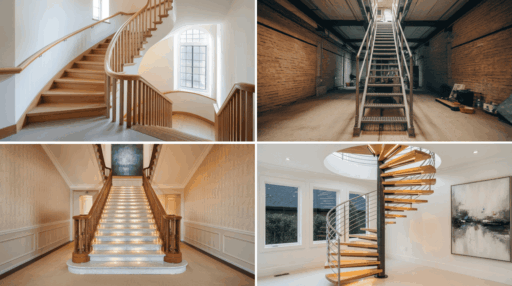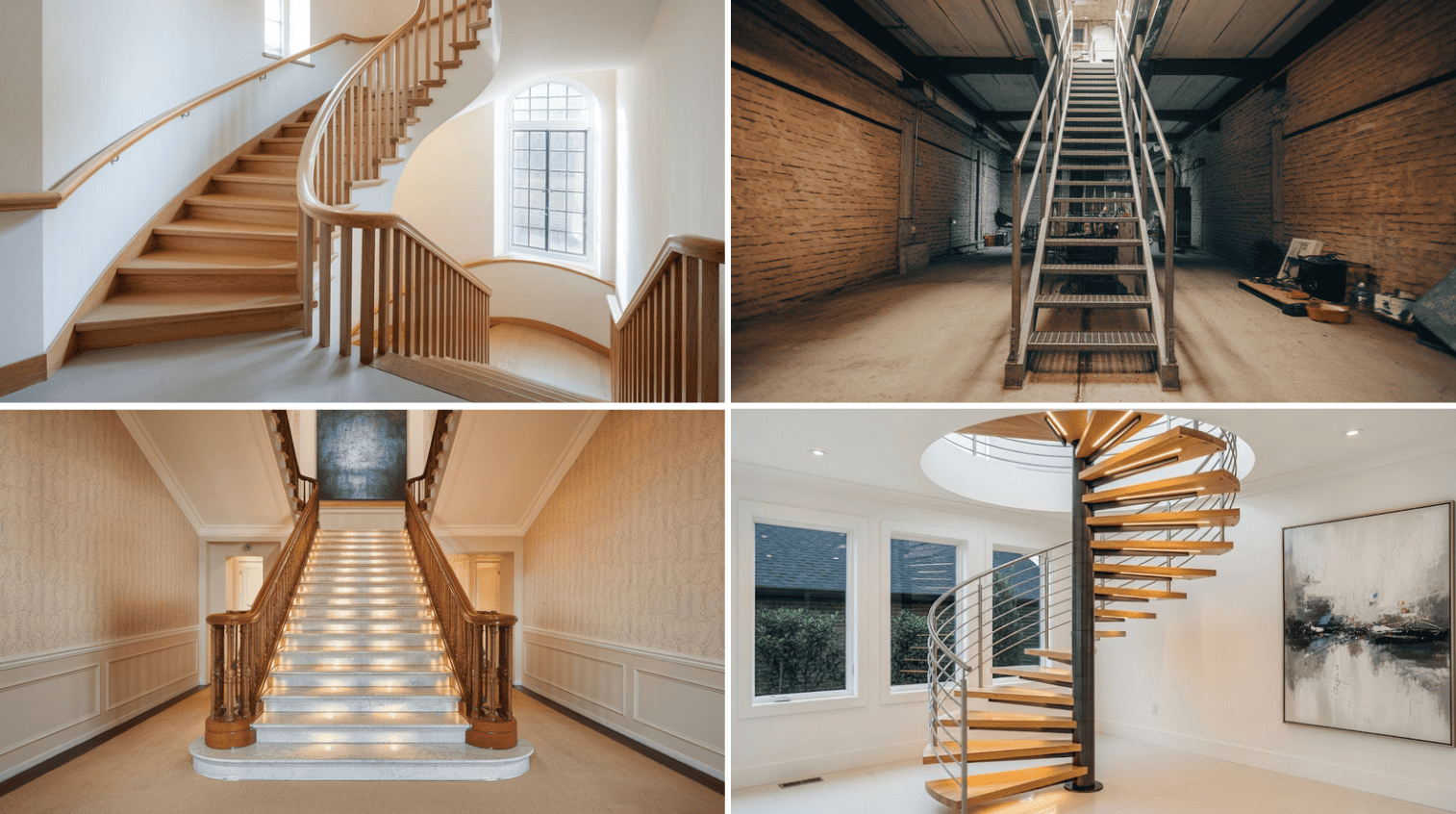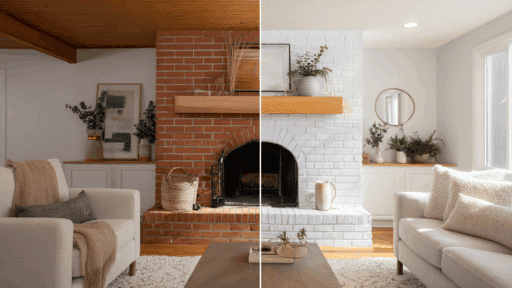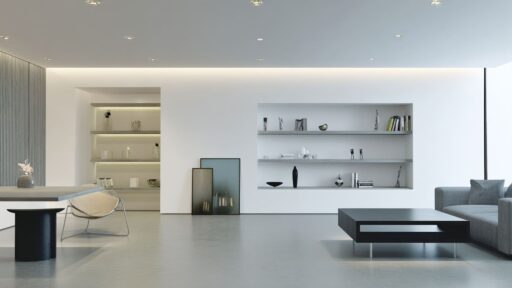Staircases are more than just a way to get from one floor to another; they’re an important part of your home’s design and function.
If you’re building a new house, renovating an old one, or just curious about architecture, understanding the different types of staircases can help you make smart choices.
From simple straight stairs to fancy curved designs, each style has its own benefits and drawbacks.
Some save space, others look amazing, and a few focus on safety. Learning about popular staircase designs, their basic parts, and how to choose the right one will help you find the perfect match for your home and lifestyle needs.
Basic Components of a Staircase
Understanding the basic parts of a staircase helps you talk about stairs more clearly. The tread is the flat part where you place your foot when climbing up or down.
The riser is the vertical part that connects one step to the next – it’s the “wall” between each step.
Stringers are the strong boards that run along the sides of the staircase, holding all the steps together like a backbone. Think of them as the frame that supports everything.
A landing is a flat platform where stairs change direction or take a break. You might find landings at the top, bottom, or middle of a staircase.
These basic parts work together to create a safe and sturdy way to move between different levels of a building.
Types of Staircases: Space and Layout
Staircases come in many different shapes and styles, each designed for specific needs and spaces. Some focus on saving space, while others prioritize safety or visual appeal.
Understanding these different types helps you choose the perfect staircase for your home or building project.
1. Straight Staircase
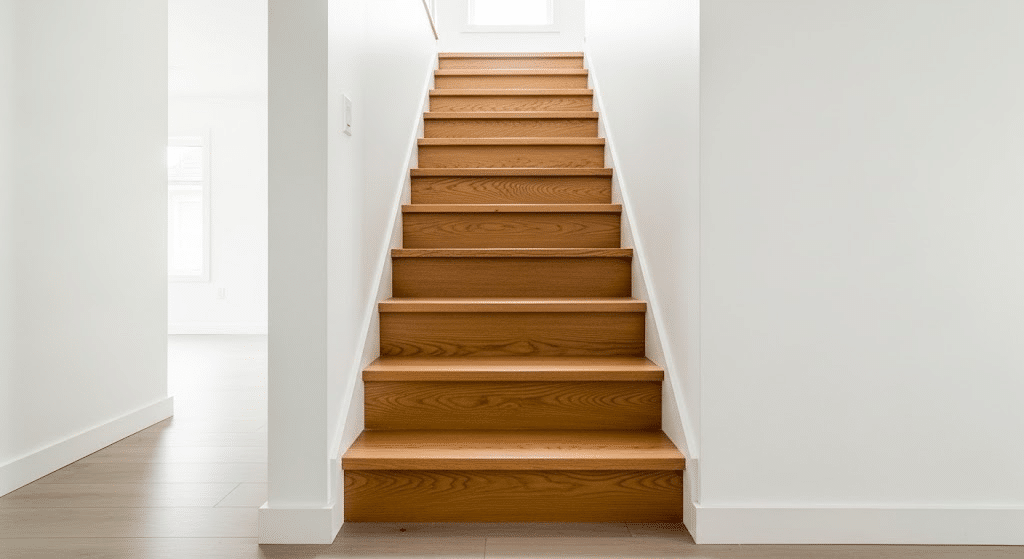
The straight staircase is the most basic and popular design. It goes directly from one floor to another without any turns or curves.
These stairs are easy to build, cost less money, and are simple to walk up and down. They work well in homes with plenty of space and straightforward layouts for everyday use.
Pros: Easy to build, low cost, simple to use, safe
Cons: Takes up lots of space, basic appearance
2. L-Shaped (Quarter-Turn) Staircase
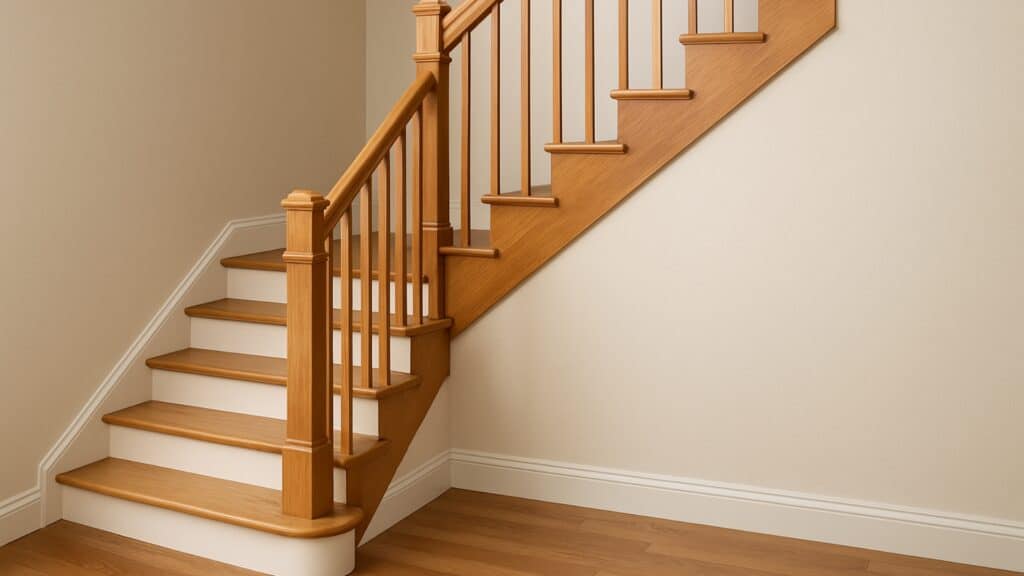
An L-shaped staircase makes a 90-degree turn at a flat landing area. This design gives more privacy between floors and looks more interesting than straight stairs.
The landing provides a safe resting spot and helps prevent long falls. These stairs fit nicely into corner spaces and break up long climbs effectively.
Pros: Fits corners, provides privacy, safer than straight
Cons: More expensive, needs more planning
3. U-Shaped (Half-Turn) Staircase
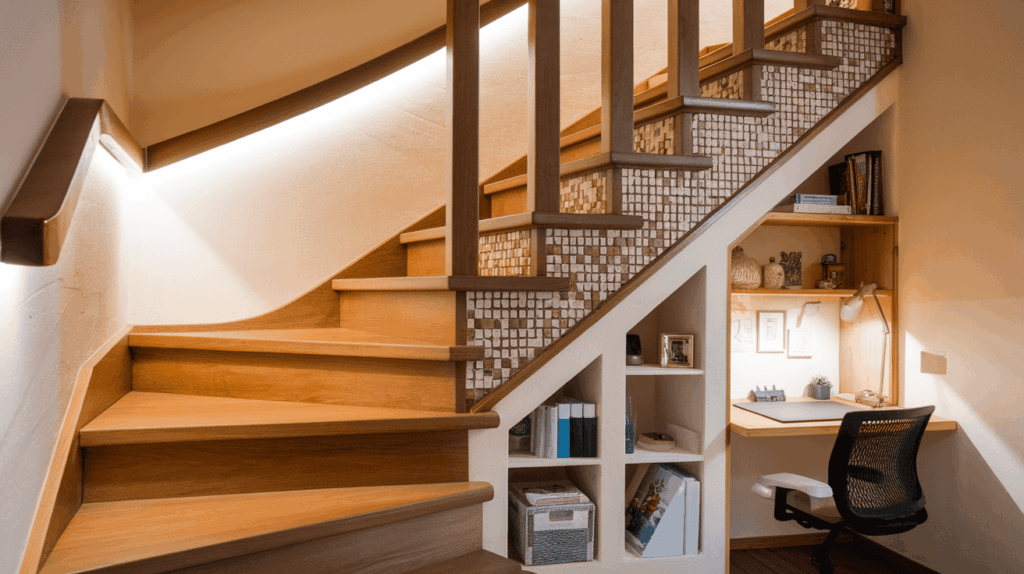
U-shaped staircases have two straight sections connected by a landing that creates a 180-degree turn. This design takes up less floor space than straight stairs while still being safe and easy to use.
The compact layout works well in smaller homes and creates a luxury, symmetrical appearance that homeowners appreciate.
Pros: Saves floor space, sleek look, and safe
Cons: Higher cost, complex design
4. Winder Staircase
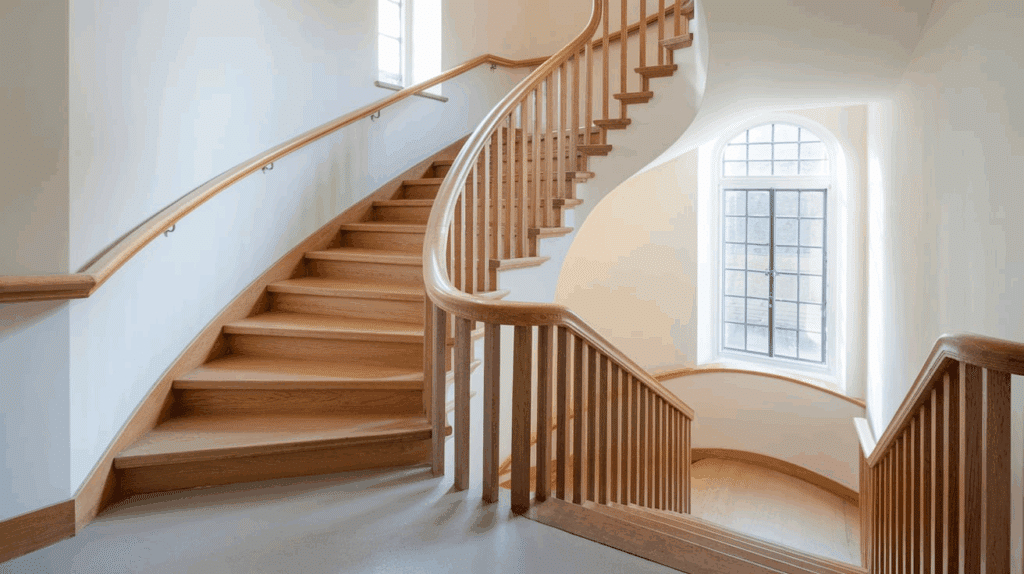
Winder staircases turn like L-shaped stairs but use triangular wedge-shaped steps instead of a landing. These pie-shaped steps help save even more space while creating smooth transitions around corners.
They look attractive but require more careful walking because the steps are narrower on one side than on the other side. They cost more than straight stairs.
Pros: Very space-efficient, attractive design
Cons: Tricky to walk on, higher cost
5. Spiral Staircase
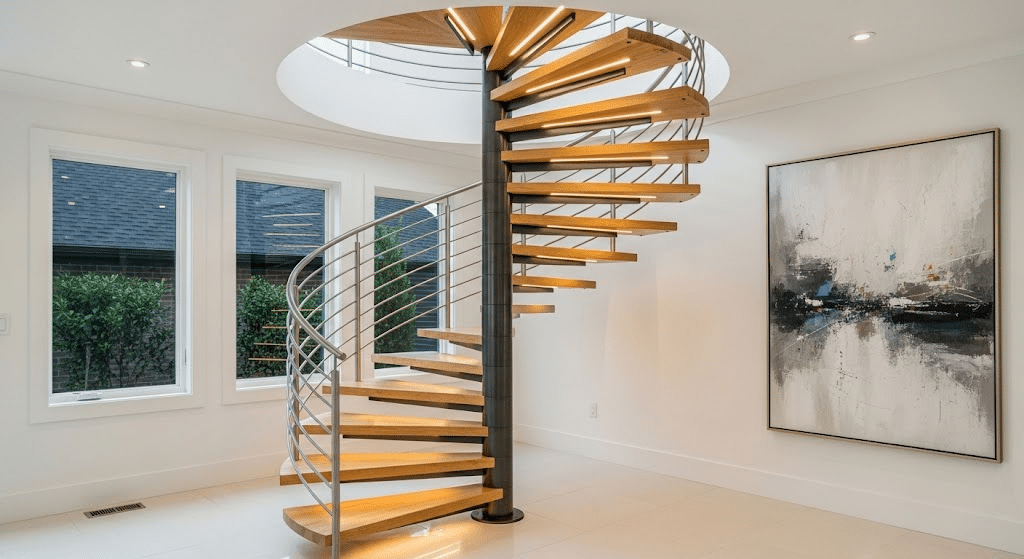
Spiral staircases wind around a central pole in a circular pattern. They take up very little floor space and create a dramatic focal point in any room.
However, they can be tricky to navigate and complicated to move furniture upstairs. These stairs work best for occasional use in tight spaces where style matters.
Pros: Minimal footprint, eye-catching
Cons: Hard to use, difficult for furniture
6. Curved Staircase
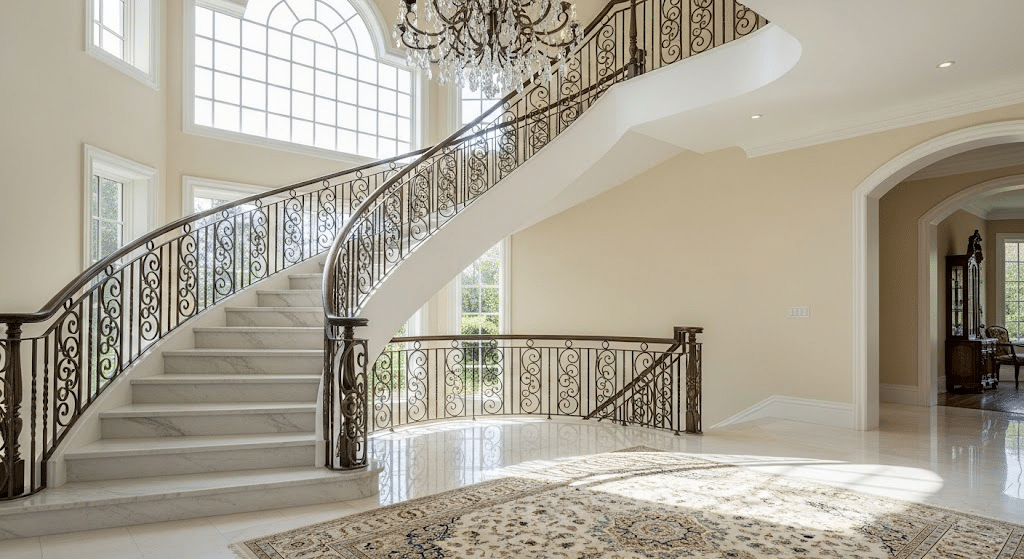
Curved staircases follow a smooth, flowing arc without any sharp corners or landings. They create a lavish and luxurious appearance that becomes a beautiful centerpiece.
These stairs require skilled craftsmanship and cost more to build, but they add significant value and style to any home with their graceful, sweeping design.
Pros: Luxurious appearance, smooth flow
Cons: Very expensive, needs skilled builders
7. Bifurcated Staircase
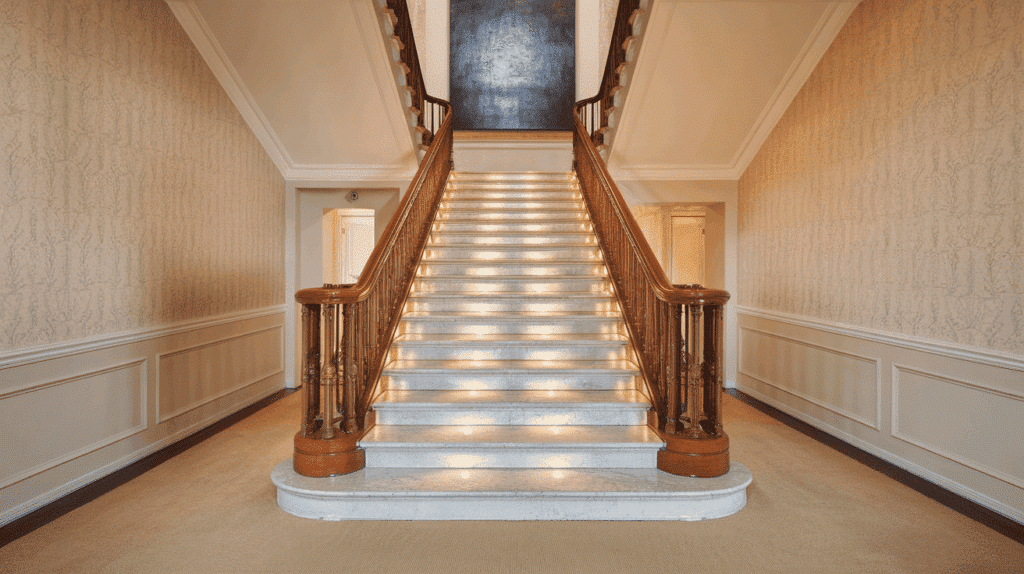
Bifurcated staircases start with one wide set of steps that split into two separate flights going in different directions. This grand design creates a dramatic entrance and impressive first impression for guests.
You often see these staircases in fancy hotels, mansions, and formal buildings where making a bold statement matters most. They need lots of space to build.
Pros: Grand entrance, impressive design
Cons: Needs huge space, very costly
8. Floating Staircase
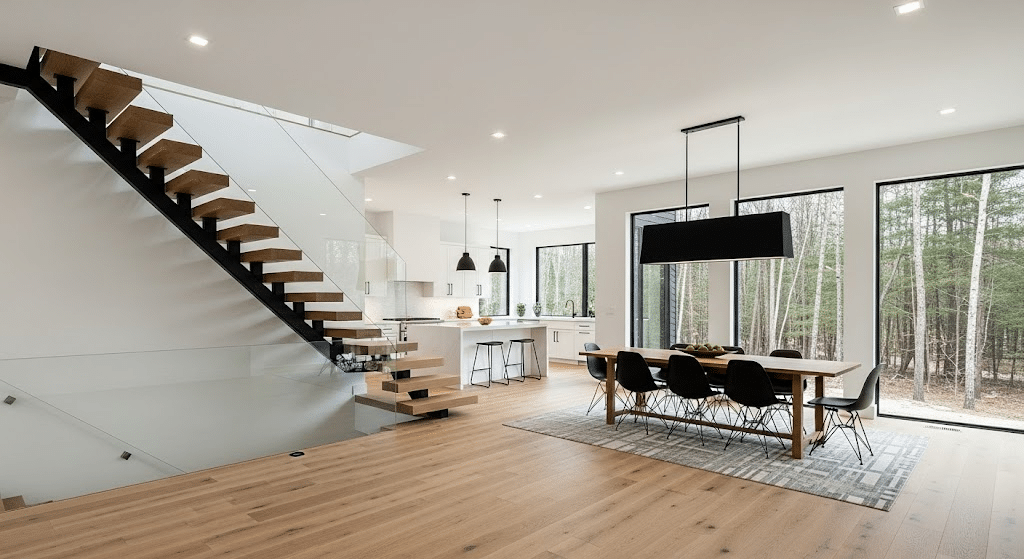
Floating staircases have treads that appear to hang in the air without visible support underneath. The steps attach to a hidden wall structure, creating a clean, modern look.
These stairs make spaces feel more open and bright, but require strong structural support and professional installation for safety.
Pros: Modern look, open feel
Cons: Expensive, needs strong support
9. Ladder or Ship Ladder Staircase
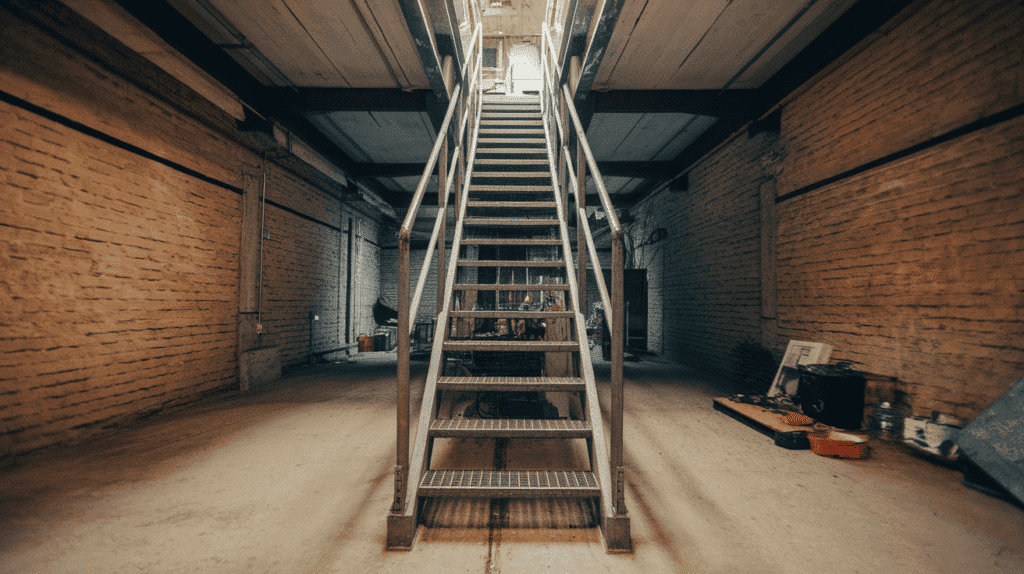
Ladder staircases are very steep and narrow, similar to climbing a ladder. They take up minimal space but require careful climbing and aren’t suitable for everyday use by families.
These stairs work well for accessing attics, lofts, or storage areas where space is extremely limited and frequent use isn’t expected. They are cheap to install.
Pros: Cheapest option, tiny footprint
Cons: Unsafe for daily use, very steep
Materials and Construction Styles
The material you choose for your staircase affects both how it looks and how well it works. Different materials suit different home styles and budgets. Here are the most popular options and what makes each one special.
- Wood – Classic and adaptable; great for traditional or rustic staircases and easy to customize.
- Metal – Strong and sleek; often used in modern or industrial designs like spiral or floating stairs.
- Glass – Offers a clean, open look; used in contemporary homes, but needs careful maintenance and safety features.
- Concrete – Durable and solid; ideal for both minimalist interiors and large-scale commercial projects.
- Mixed Materials – Combines elements like wood plus metal for unique visual contrast and design flexibility.
When picking materials, think about your home’s style, your budget, and how much upkeep you want to do. Some materials cost more upfront but last longer, while others need regular care to stay looking good.
Choosing the Right Staircase for Your Space
Picking the right staircase depends on how much space you have and how often people will use it.
Straight stairs work best for daily use, while spiral stairs are perfect for tight spaces with light traffic. Your staircase should match your home’s style.
Modern floating stairs look great in contemporary homes, but curved stairs suit traditional designs better. Always think about who will use the stairs, including elderly family members or small children.
For complex designs like floating or curved staircases, you need to talk with a structural engineer to make sure they’re safe and follow building codes.
An architect can help blend your staircase perfectly with your home’s overall design and layout.
Design Inspiration and Styling Tips
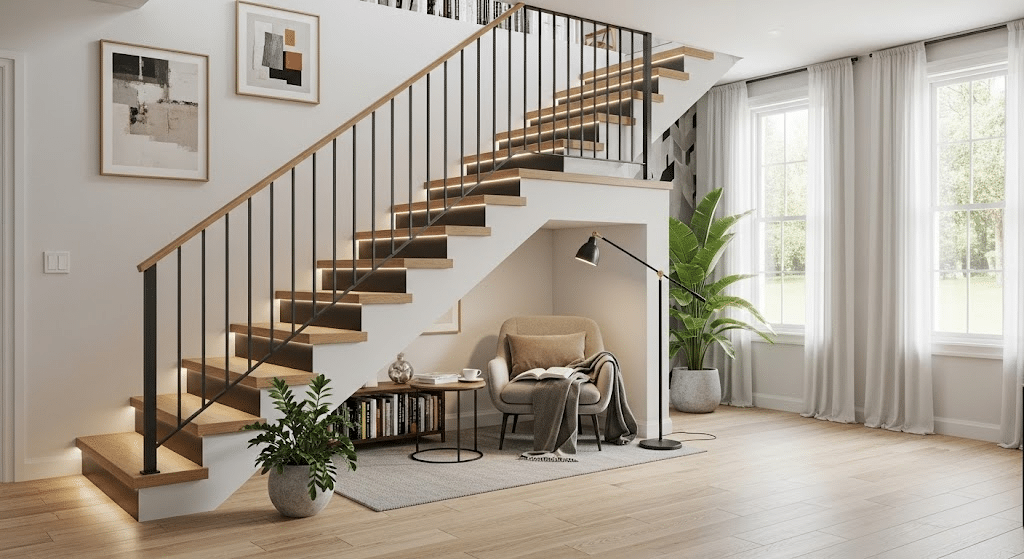
Your staircase can be more than just a way to get upstairs; it can be a beautiful feature that makes your home look amazing. With some creative ideas and smart planning, you can turn any staircase into an eye-catching centerpiece.
- Paint your stair risers in bright colors or fun patterns to make them stand out.
- Add iron railings or wooden balusters that match your home’s style.
- Install lights under each step or along the handrail for a modern glow.
- Use the space under your stairs for storage, a reading nook, or a small office.
- Choose open risers instead of solid ones to make your room feel bigger and brighter.
Remember that small changes can make a big difference in how your staircase looks. Pick ideas that fit your budget and home style, and don’t be afraid to mix different elements together for a unique design.
The Bottom Line
Choosing from the many types of staircases doesn’t have to be overwhelming when you know the basics. Each design serves different needs, if you want to save space, create an attractive focal point, or stick to a tight budget.
Remember to consider your family’s daily needs, your home’s style, and available space before making a decision. Think about who will use the stairs most often and how they fit with your home’s overall look.
For complex designs, don’t hesitate to consult with professionals who can ensure your staircase is both beautiful and safe. With the right choice, your staircase will serve your family well for years to come while adding value and character to your home.
What type of staircase do you have in your home? Share your experience in the comments below and let us know which design caught your eye!

